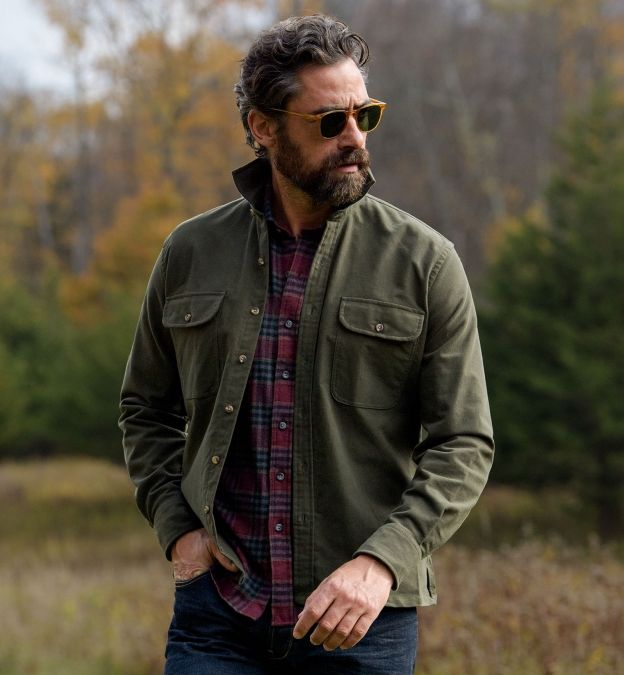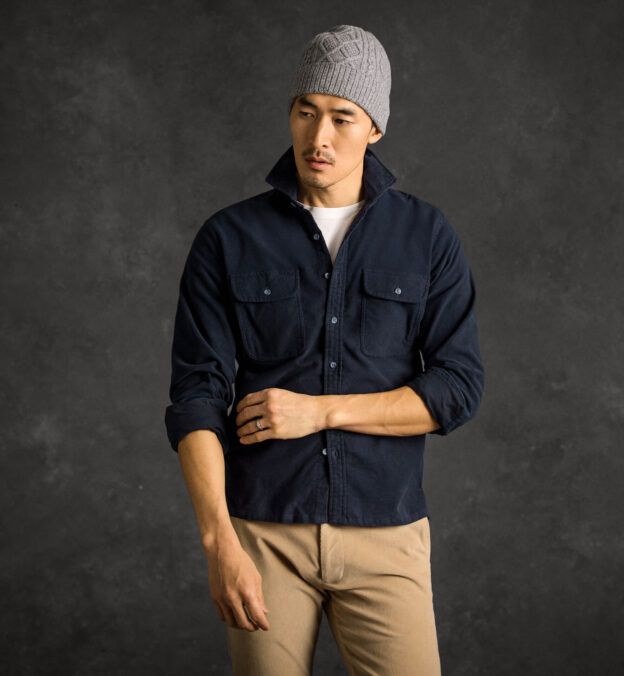The overshirt as a casual layering piece has had a surge in popularity in recent years. It can be worn as a mid layer, as light outerwear, and works well in a relaxed approach to tailored clothing. Here we’ll highlight the overshirt’s history and the fabric and design elements that make the perfect one.
To create the perfect overshirt size, visit this page.
History
The origins of the overshirt can be traced back to late 19th-century workwear. At that time, men who worked manual labor jobs typically wore denim overalls for maximum protection from dirt and other elements. They eventually modified their workwear to allow for more comfort and mobility, removing the bib and braces from the overalls (creating jeans) and adding heavyweight shirts over their first top layer to achieve the same level of protection up top as the denim provided on the bottom. These shirts featured large pockets for storage and easy access to items the men needed throughout the day. Thus the overshirt was born, and it became popular among working-class men for its durability and utility.

Style
An overshirt is essentially a hybrid between a shirt and a jacket, and as such the design mixes elements of the two. It generally features a small- to medium-sized soft collar, such as our Soft Franklin Spread, Soft English Spread, Soft President Spread, or Soft Point collars. Overshirts do not have lapels, and they have the soft front plackets and button cuffs typically found on a dress shirt. Overshirts are usually designed with flap pockets for utility. Straight hems and larger buttons such as our coconut shell, natural corozo, or horn buttons are ideal to achieve a casual look. Overshirts are less dressy than sport coats but should be worn similarly, as a top layer/outerwear because of their design and the weight of their fabrics.
Fabric
The fabrics used to make overshirts are thicker than those of dress shirts but less bulky than those of jackets. Dress shirt fabrics are typically of light or medium weight and are fine enough to be worn as a first layer against your skin. Overshirt fabrics, however, are heavier and include chamois, heavy flannels, corduroys, denims, and canvasses. You may also find overshirts made from the same fabrics as sport coats, as they are analogous to each other in casual and more dressed-up looks.
